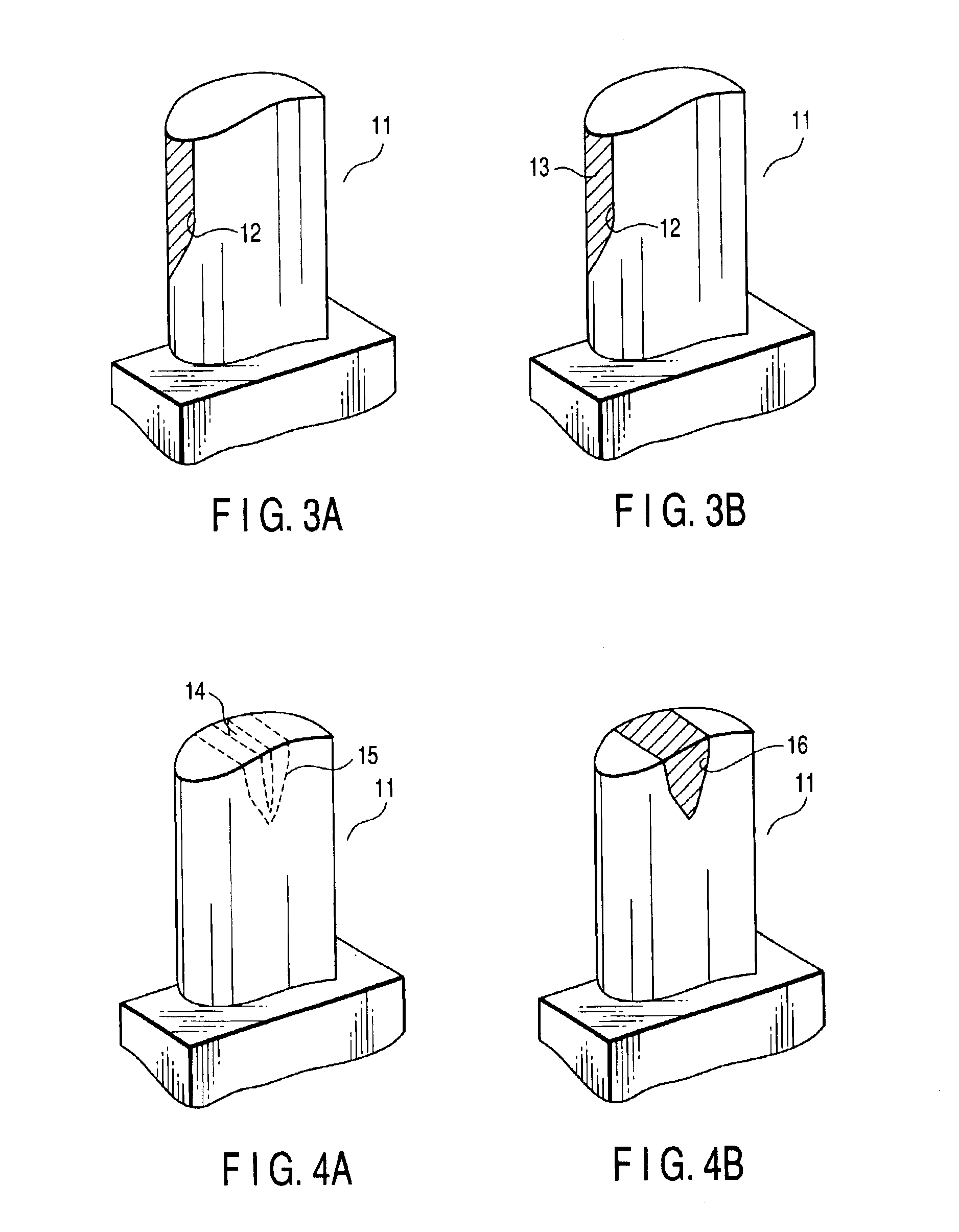Ni-based sintered alloy
a sintered alloy and ni-based technology, applied in the direction of engines, mechanical equipment, machines/engines, etc., can solve the problems of insufficient sintering and inability to obtain sufficient mechanical strength, and achieve the effect of overcoming mechanical strength deficiency and avoiding welding defects
- Summary
- Abstract
- Description
- Claims
- Application Information
AI Technical Summary
Benefits of technology
Problems solved by technology
Method used
Image
Examples
example 1
[0043]In this Example, the bulk molding will be described with reference to FIG. 2. First of all, the two kinds of Ni alloy powders forming the Ni-based sintered alloy powder are formed of the powders having the compositions given below:[0044]Low melting point Ni alloy powder: Ni-10.7 Cr-17.2 Co-2.6 Mo-2.0 W-5.8 Ta-8.6 Ti-8.7 Al-2.6 Nb-1.2 B-0.27Zr[0045]High melting point Ni alloy powder: Ni-17.1 Cr-3.1 W-0.19C
[0046]A Ni-based sintered alloy powder was prepared by mixing in, for example, a ball mill, 45% by weight of the low melting point Ni alloy powder of the composition given above and 55% by weight of the high melting point Ni alloy powder of the composition given above. After the Ni-based sintered alloy powder was subjected to a compression molding in the shape of a vane, the molded powder was sintered by the heating at 1,215° C. for 8 hours. Then, a stepwise heat treatment including the heating at 1,120° C. for 2 hours and the additional heating at 850° C. for 24 hours, which ...
example 2
[0049]In this Example, the coating will be described with reference to FIGS. 3A and 3B. FIG. 3A schematically shows the construction of a dynamic vane before the coating, and FIG. 3B schematically shows the dynamic vane after the coating. The Ni-based sintered alloy powder used in Example 2, which included a low melting point Ni alloy powder and a high melting point Ni alloy powder, was equal in composition to the Ni-based sintered alloy powder used in Example 1.
[0050]To be more specific, a Ni-based sintered alloy powder was prepared by mixing, in a ball mill, 45% by weight of a low melting point Ni alloy powder having a particle diameter not larger than 75 μm and 55% by weight of a high melting point Ni alloy powder having a particle diameter not larger than 150 μm. Then, the Ni-based sintered alloy powder was blown onto a thin portion 12 of the dynamic vane 11 shown in FIG. 3A by, for example, a low pressure plasma spraying method so as to achieve the coating, followed by heating ...
example 3
[0052]In this Example, a local padding will be described with reference to FIGS. 4A and 4B. FIG. 4A schematically shows the dynamic vane before the local padding treatment, and FIG. 4B schematically shows the dynamic vane after the local padding treatment. Also, the Ni-based sintered alloy powder used in Example 3, which included a low melting point Ni alloy powder and a high melting point Ni alloy powder, was equal in composition to the Ni-based sintered alloy powder used in Example 1.
[0053]Example 3 covers the case of repairing, for example, a cracked portion 14 of the dynamic vane 11. In the case of Example 3, a peripheral portion 15 of the cracked portion 14 denoted by dotted lines in FIG. 4A is removed first by the cutting with, for example, a grinder. Then, a Ni-based sintered alloy powder is prepared by mixing, in a ball mill, 45% by weight of a low melting point Ni alloy powder and 55% by weight of a high melting point Ni alloy powder, followed by kneading the resultant Ni-b...
PUM
| Property | Measurement | Unit |
|---|---|---|
| melting point | aaaaa | aaaaa |
| melting point | aaaaa | aaaaa |
| melting point | aaaaa | aaaaa |
Abstract
Description
Claims
Application Information
 Login to View More
Login to View More - R&D
- Intellectual Property
- Life Sciences
- Materials
- Tech Scout
- Unparalleled Data Quality
- Higher Quality Content
- 60% Fewer Hallucinations
Browse by: Latest US Patents, China's latest patents, Technical Efficacy Thesaurus, Application Domain, Technology Topic, Popular Technical Reports.
© 2025 PatSnap. All rights reserved.Legal|Privacy policy|Modern Slavery Act Transparency Statement|Sitemap|About US| Contact US: help@patsnap.com


